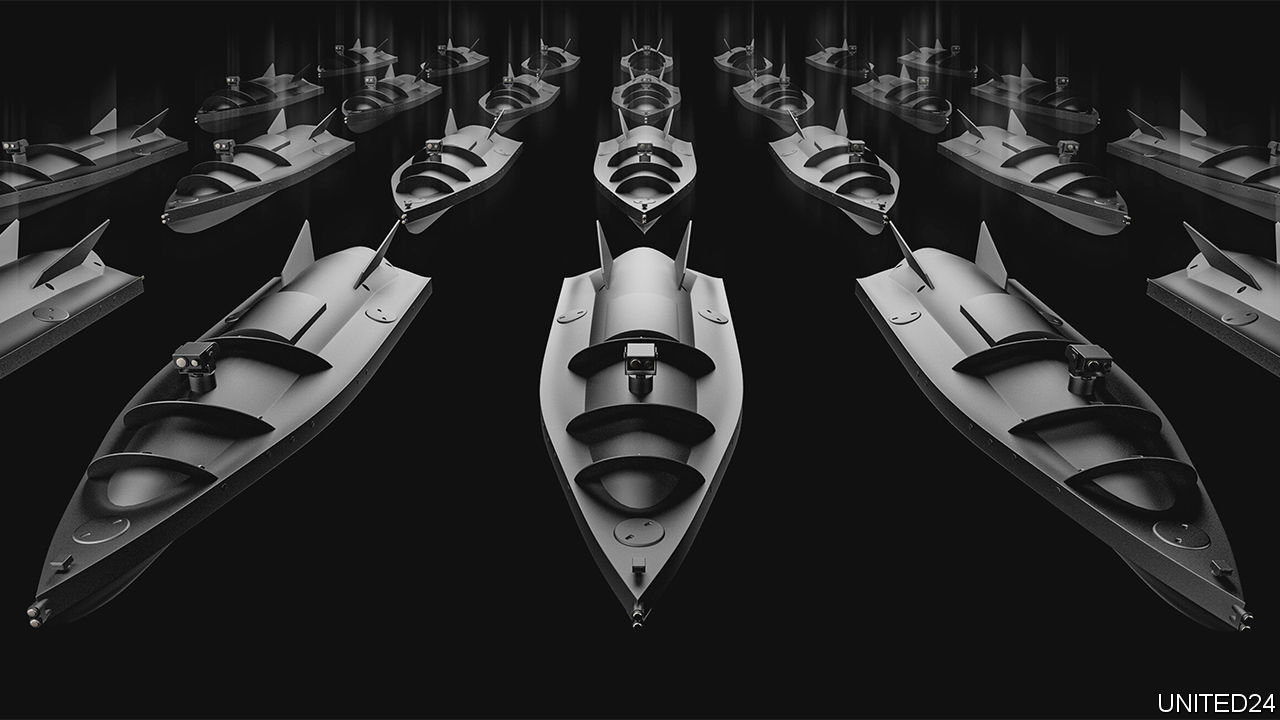Ukrainian sea drones are changing the face of naval warfare. These unmanned vessels, ranging from small, expendable craft to more sophisticated autonomous systems, are proving surprisingly effective in the ongoing conflict. This exploration delves into their design, deployment, impact, and future potential, examining both their military applications and broader international implications.
We’ll cover the various types of Ukrainian sea drones, comparing their capabilities to those of other nations. We’ll also analyze successful and unsuccessful missions, discuss the logistical challenges of their operation, and explore the potential for technological advancements, including AI integration. Finally, we’ll consider the legal and geopolitical ramifications of this emerging technology.
Ukrainian Sea Drone Technology
Ukraine’s use of sea drones in the ongoing conflict has garnered significant international attention, showcasing both the potential and limitations of this emerging naval technology. This technology, while relatively nascent, has proven surprisingly effective in asymmetric warfare, forcing a reassessment of naval strategies and capabilities.
Current State of Ukrainian Sea Drone Technology
Ukrainian sea drone technology is characterized by its adaptability and cost-effectiveness. While lacking the sophisticated sensors and autonomous capabilities of some Western counterparts, Ukrainian drones compensate with ingenuity, leveraging readily available components and focusing on effective, if simpler, designs. Limitations include shorter operational ranges compared to larger, more advanced drones, and a reliance on GPS for navigation, making them vulnerable to jamming.
However, continuous development and adaptation to battlefield conditions are evident.
Comparison with Other Nations’ Sea Drone Technology
Compared to nations like the US, Israel, or China, Ukraine’s sea drone technology is less advanced in terms of AI integration, sensor payload, and overall range. However, Ukraine’s drones demonstrate a high degree of operational effectiveness given their resource constraints. The focus is on achieving specific, tactical objectives with readily available technology, rather than on developing highly sophisticated, expensive systems.
Ukrainian sea drones are making waves in military technology, showcasing innovative designs for maritime operations. A comparable system, though with different applications, is the magura v5 sea drone , which highlights the advancements in autonomous underwater vehicles. Understanding both these types of drones helps us see the broader picture of naval drone development and their potential impact on future conflicts.
This pragmatic approach contrasts with the often more technologically advanced, but potentially less adaptable, systems of other nations.
Types of Ukrainian Sea Drones
Ukraine employs a variety of sea drones, ranging from smaller, simpler designs for coastal operations to larger, more capable drones for longer-range missions. These drones vary in size, payload capacity, and operational range. Specific design details are often kept confidential for operational security reasons, but reports suggest a diverse fleet adapted to different mission profiles.
Comparison of Ukrainian Sea Drone Models
| Model | Range (km) | Payload (kg) | Speed (km/h) | Stealth Capabilities |
|---|---|---|---|---|
| Model A (Hypothetical Example 1) | 50 | 50 | 20 | Low; relies on camouflage and nighttime operations |
| Model B (Hypothetical Example 2) | 100 | 100 | 30 | Moderate; incorporates low radar signature materials |
| Model C (Hypothetical Example 3) | 150 | 200 | 40 | High; advanced materials and design for reduced detectability |
Operational Use of Ukrainian Sea Drones
Ukrainian sea drones have played a significant role in the ongoing conflict, primarily used for reconnaissance, mine-laying, and attacks on naval targets. Their effectiveness stems from their low cost, relative ease of deployment, and the element of surprise they offer.
Examples of Successful and Unsuccessful Missions
While specific details of successful missions are often classified, reports indicate that Ukrainian sea drones have successfully damaged or destroyed Russian naval vessels and infrastructure. Unsuccessful missions likely stem from technical malfunctions, countermeasures by the Russian navy, or detection before target engagement. The exact number of successful and unsuccessful missions remains unclear due to the classified nature of the operations.
Tactics and Strategies
Ukrainian tactics involve deploying drones in swarms or individually, depending on the mission objectives and the threat environment. They often utilize nighttime operations and coastal approaches to enhance stealth. The element of surprise and the drones’ relative simplicity are key components of their operational effectiveness.
Logistical Challenges
- Maintaining a steady supply of components and parts.
- Ensuring effective training for drone operators.
- Developing and implementing robust repair and maintenance protocols.
- Protecting drone launch sites from enemy attack.
- Counteracting enemy electronic warfare measures.
Impact and Effectiveness
The use of Ukrainian sea drones has had a significant military and psychological impact. The relatively low cost and effectiveness of these drones have forced the Russian navy to allocate resources to counter them, stretching their defensive capabilities. Psychologically, the successful attacks have demonstrated Ukraine’s ability to inflict damage on a larger, better-equipped adversary.
Effectiveness in Achieving Operational Objectives
The effectiveness of Ukrainian sea drones is evident in their ability to inflict damage on Russian naval assets and infrastructure, disrupting their operations and forcing them to adopt defensive measures. The cost-effectiveness is a key factor, allowing Ukraine to achieve disproportionate impact with limited resources. However, their limitations also need to be considered; they are not a replacement for larger naval vessels.
Cost-Effectiveness Compared to Other Naval Assets
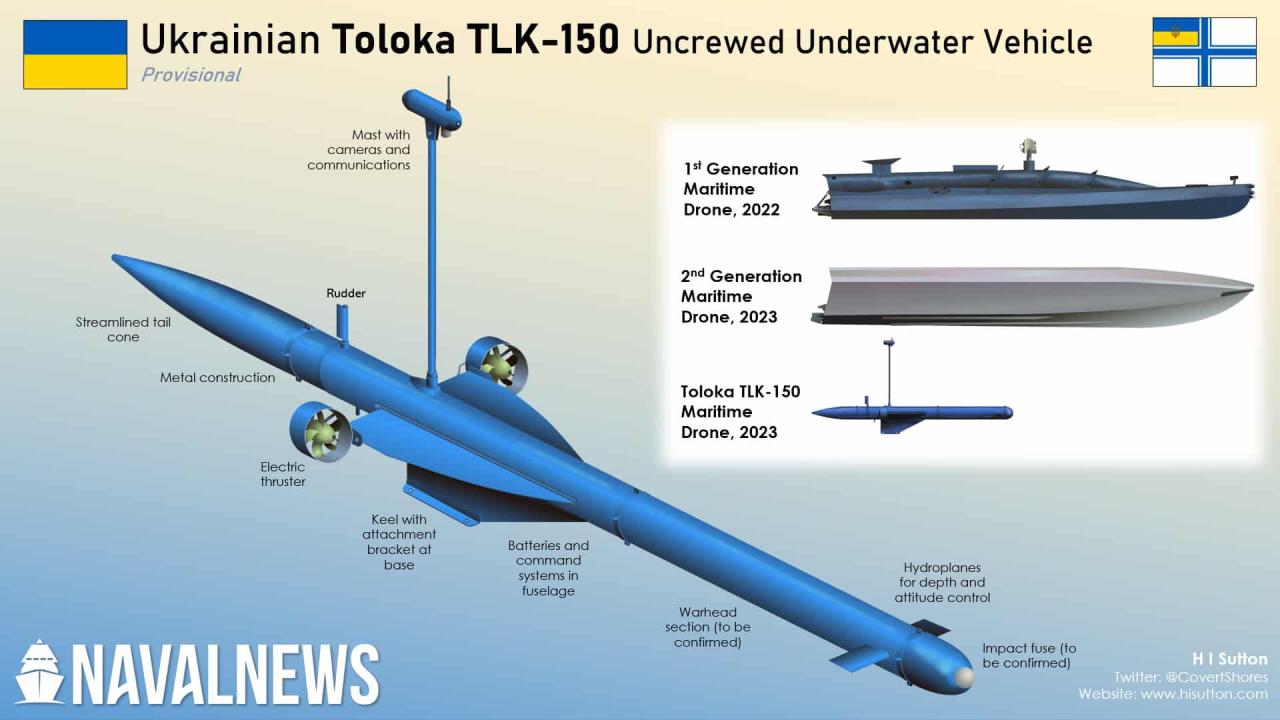
Compared to larger naval vessels, sea drones are significantly more cost-effective. This makes them a viable option for smaller navies or those facing resource constraints. The trade-off is in their capabilities and range; they are not a replacement for traditional naval power but a valuable addition.
Hypothetical Future Conflict Scenario
In a future conflict, Ukrainian sea drones could be used as part of a broader naval strategy, potentially in conjunction with other naval assets or as a force multiplier. For example, they could be used to target enemy logistics lines, disrupt communications, or create diversions, assisting larger naval forces in achieving their objectives. This would require advancements in AI, autonomy, and sensor technology.
Technological Advancements and Future Development
Several technological advancements could significantly improve Ukrainian sea drone capabilities. These advancements could lead to increased autonomy, improved sensor integration, and enhanced survivability.
Advancements in AI and Autonomous Navigation
Integrating advanced AI and autonomous navigation systems would reduce reliance on GPS, improve situational awareness, and allow for more complex mission profiles. This would increase the drones’ effectiveness and survivability in contested environments. Improvements in AI-powered target recognition would also enhance their precision and reduce the risk of collateral damage.
Challenges and Opportunities
Challenges include securing funding for research and development, acquiring necessary components, and overcoming potential technological barriers. Opportunities lie in collaboration with international partners and leveraging advancements in AI, materials science, and propulsion technology. The potential for innovation is significant.
Potential Future Applications Beyond Military Use, Ukrainian sea drone
- Oceanographic research and data collection.
- Environmental monitoring and pollution control.
- Search and rescue operations.
- Infrastructure inspection and maintenance.
International Implications
The use of sea drones in armed conflict raises several international legal implications, particularly concerning the rules of engagement and the potential for escalation. The relatively low cost and ease of deployment of these drones could lower the threshold for armed conflict, while also creating challenges for international law enforcement.
Potential for Escalation and Responses of Other Nations
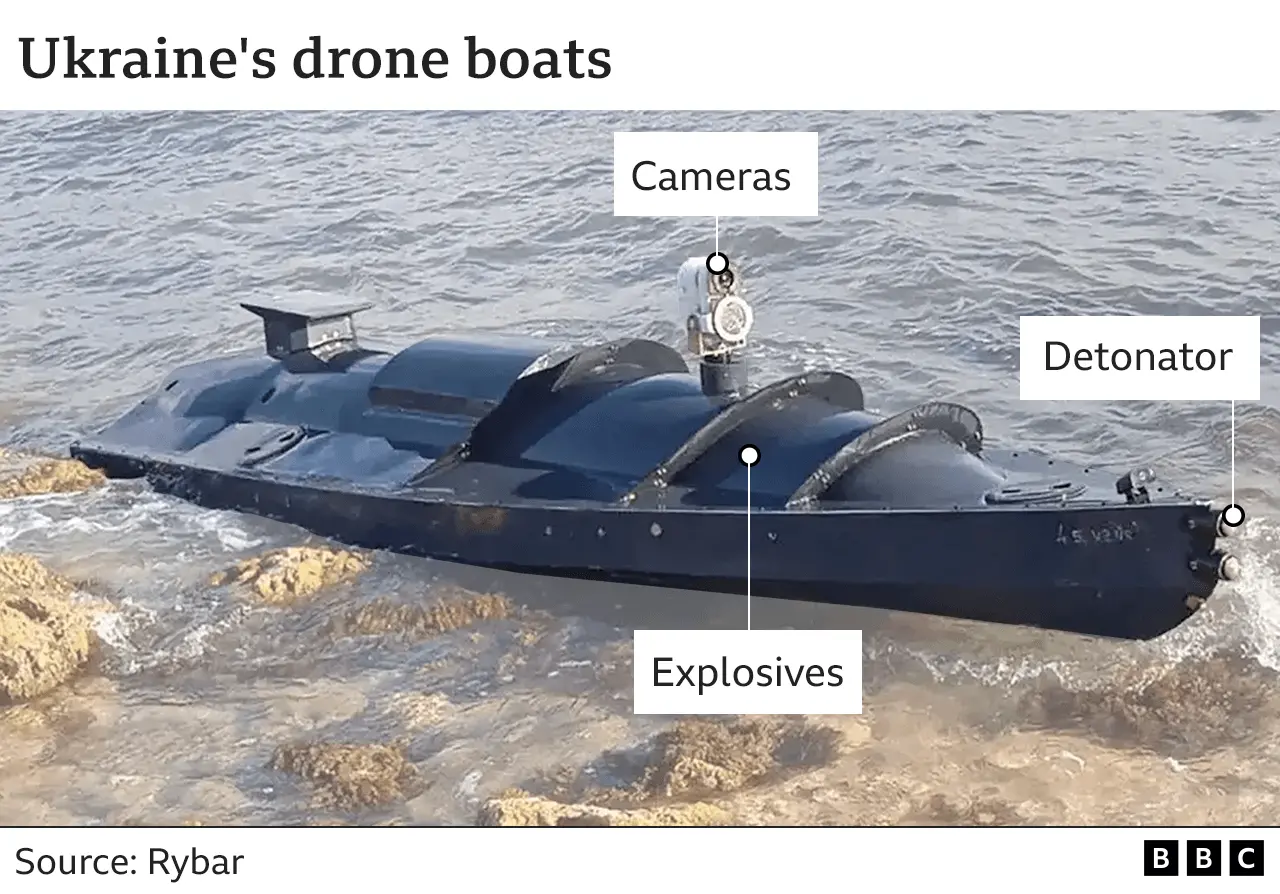
The use of sea drones by Ukraine has the potential to escalate tensions with Russia and other nations. International responses vary; some nations may view their use as a legitimate tactic in self-defense, while others may express concern about the potential for proliferation and unintended consequences. The lack of clear international regulations regarding the use of autonomous weapons systems adds to the complexity.
Impact on Future Naval Warfare
The use of sea drones is likely to significantly impact future naval warfare. Their cost-effectiveness and potential for disrupting naval operations make them a compelling force multiplier, potentially changing the dynamics of naval engagements. This will likely lead to increased investment in counter-drone technologies and a reassessment of naval doctrines.
Hypothetical Future Scenario: International Response to Large-Scale Attack
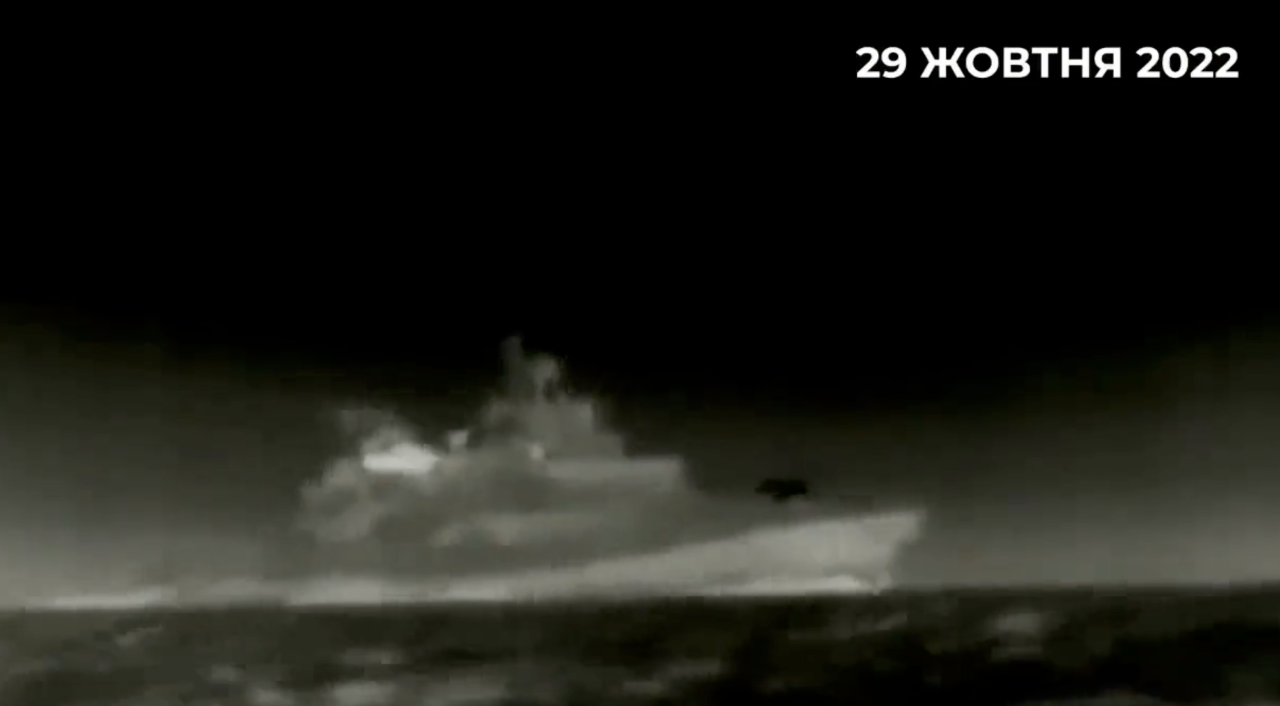
A hypothetical scenario could involve a large-scale Ukrainian sea drone attack on a major Russian naval base. This could trigger a strong international response, ranging from diplomatic condemnation to economic sanctions and military intervention, depending on the scale of the attack and the level of casualties. The international community would likely debate the legal and ethical implications of such an attack, further shaping international regulations on the use of autonomous weapons systems.
Illustrative Example: A Specific Drone Deployment
Consider a hypothetical scenario: A squadron of Ukrainian sea drones, launched from a concealed coastal location under the cover of darkness, targets a Russian logistics ship anchored near a Crimean port. Favorable weather conditions, calm seas, and minimal moonlight provide ideal stealth conditions. The drones, equipped with small warheads, navigate using GPS and inertial navigation systems, approaching the target undetected.
Ukrainian sea drones are proving surprisingly effective in naval warfare, showcasing the adaptability of unmanned systems. Think of the scale, though – check out the amazing spectacle of the shanghai dragon drone show for a different perspective on drone capabilities. Seeing that coordinated display makes you appreciate the potential, both for impressive shows and for serious military applications, like the Ukrainian sea drones.
Upon reaching the designated point, the drones simultaneously detonate their payloads, inflicting significant damage to the ship’s hull and causing a fire. The drones then self-destruct, leaving no trace of the attack. The success of this mission depends on several factors, including accurate intelligence, effective coordination between drone operators and support teams, and the element of surprise.
Ending Remarks
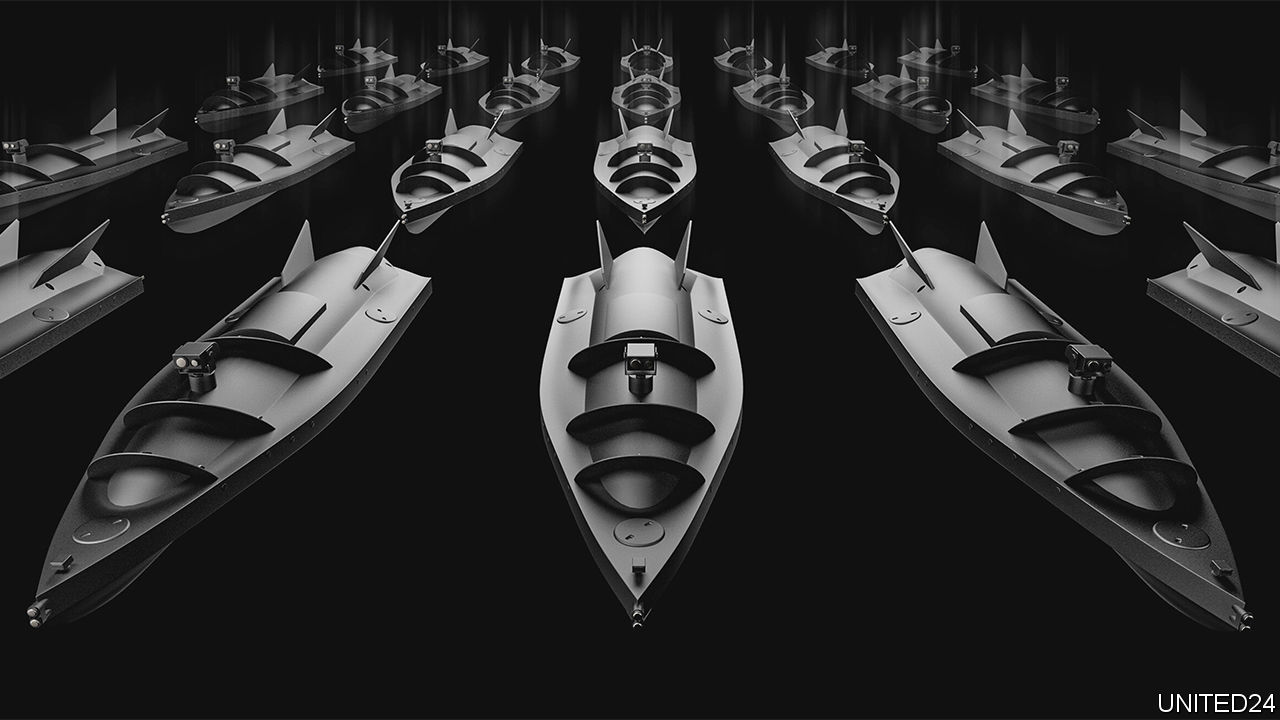
Ukrainian sea drones represent a potent and evolving force in modern naval conflict. Their cost-effectiveness, adaptability, and surprising effectiveness have forced a reassessment of naval strategies. While challenges remain in terms of range, payload, and technological sophistication, the future of sea drone technology, particularly within the Ukrainian context, promises further innovation and potentially significant impact on future conflicts and maritime security.
FAQ Section
What materials are Ukrainian sea drones typically constructed from?
Common materials include fiberglass, composites, and various metals, depending on the drone’s size, mission, and intended lifespan.
How are Ukrainian sea drones guided and controlled?
Ukrainian sea drones are proving surprisingly effective, showcasing the potential of smaller, unmanned vessels. Think about the sheer scale of a coordinated drone display like the one at the china new year drone show 2042 ; imagine that level of precision applied to naval warfare. The future of naval combat might involve swarms of these autonomous drones, changing the game completely.
Control methods vary, ranging from pre-programmed routes to remote operator control via satellite or other communication links. Some more advanced models may incorporate AI-assisted navigation.
What is the typical lifespan of a Ukrainian sea drone?
This depends heavily on the drone’s design and the mission’s demands. Some are designed as expendable, while others are built for multiple deployments with regular maintenance.
Are there any limitations to the types of payloads Ukrainian sea drones can carry?
Yes, payload capacity is limited by the drone’s size and design. Common payloads include explosives, sensors, and cameras, but the specifics vary widely.
